Whether you’re a beginner or an advanced aquarium owner, a powerhead can make a world of difference. These devices realistically circulate water, creating waves that help feed fish and corals and keep dead zones at bay. The waves they create also prevent the accumulation of waste and other toxins in the tank. Freshwater tanks don’t require a lot of water flow, but regular waves will keep the water conditions suitable for fish and plants.
Content Table
If you have long been looking to venture off the beaten path and try out installing the powerhead in a 100-gallon fish tank but never quite had enough information, then keep on reading. In this article, we will cover all the sides that are required to recreate the beautiful underwater world with a powerhead in the aquarium.
The powerhead has two main functions: to circulate the water in the tank and to feed the fish and corals. It also facilitates the feeding of invertebrates by distributing food to different parts of the tank and removing dead zones in the tank. If you want to make your aquarium a real place, you will need a power head.
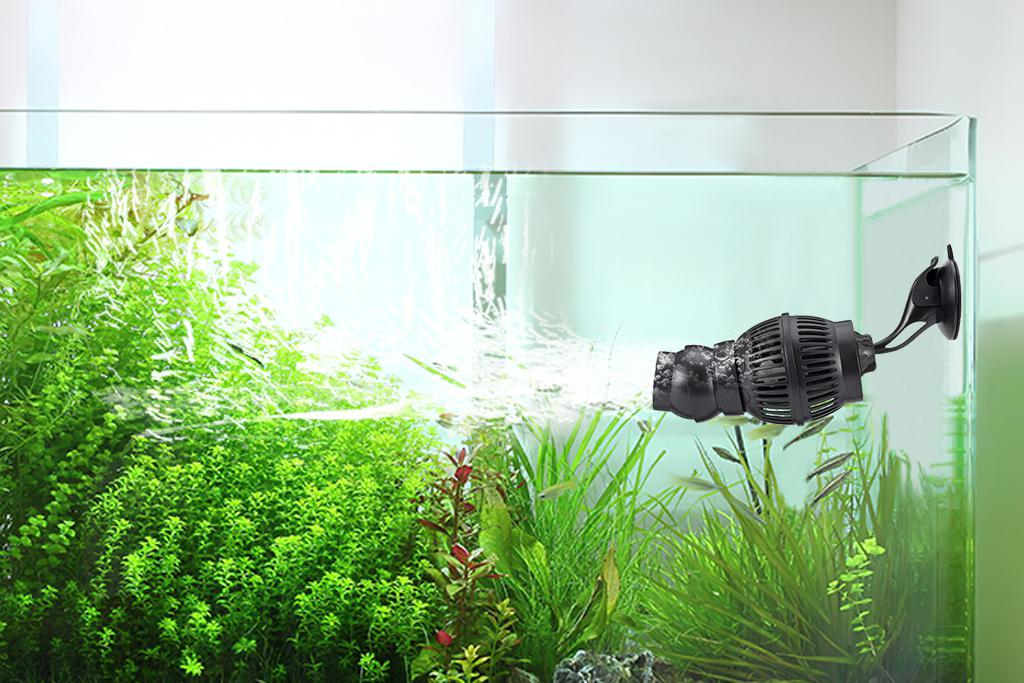
What is the role of the powerhead in freshwater and reef tanks respectively?
The role of a powerhead in the aquarium is to provide movement for aquatic plants and aquatic pets. When the water current is increased, fish tend to move around more actively and plants also respond to the water flow. Long-leaf and medium-leaf plants are most affected by a powerhead’s water movement. So, how powerhead can help you?
Aquatic plants react to a powerhead’s flow pattern
When choosing a new aquarium powerhead, make sure you take the size and layout of the water tank into consideration. Some power heads have a wider water flow pattern, while others produce a smaller one. The flow pattern of the powerhead can significantly affect the aquatic plants in a freshwater or reef tank. While some powerheads are relatively inexpensive, others are more expensive, and their lifespan varies widely. If you’re using one of the more expensive power heads, make sure to carefully measure the size of the tank to determine the flow pattern.
Prevents dead spots from forming
A Powerhead can help to prevent spots from forming in a freshwater or reef aquarium. Dead spots are areas where water is stagnant and does not reach the rest of the tank. These areas are often filled with algae and other unwanted creatures and are detrimental to the health of fish and plants. Powerhead can help to prevent dead spots by cleaning and moving water within the tank.
Increases oxygen levels
It has been shown that artificial lighting does not increase oxygen levels in a reef aquarium. A single 18-inch fluorescent fixture does, however, exceed the respiratory demands of reasonable biomass. Consequently, the oxygen saturation of a ten-gallon laboratory tank is typically less than 90%. In addition, fish in this tank do not require as much light to survive, and one water flow device is enough to keep the aquarium’s atmosphere at the optimum level.
Reduces algae growth
If you want to reduce algae growth in a freshwater tank or reef tank, you should try a Powerhead. It will reduce the number of nutrients in your tank. A Powerhead will be especially beneficial in reducing the amount of phosphate. Also, there are other ways to reduce algae growth, make sure to replace your filter media every two to three months. The next step is to add algae-eating inhabitants to your tank, these inhabitants include the fox-face crab, chevron tang, chestnut cowries, and Mexican turbo snails.
Creates a wave motion
In a freshwater aquarium, a powerhead can be used to create laminar or unidirectional flow. A wave maker, on the other hand, creates a ripple effect that spreads water flow out in many directions.
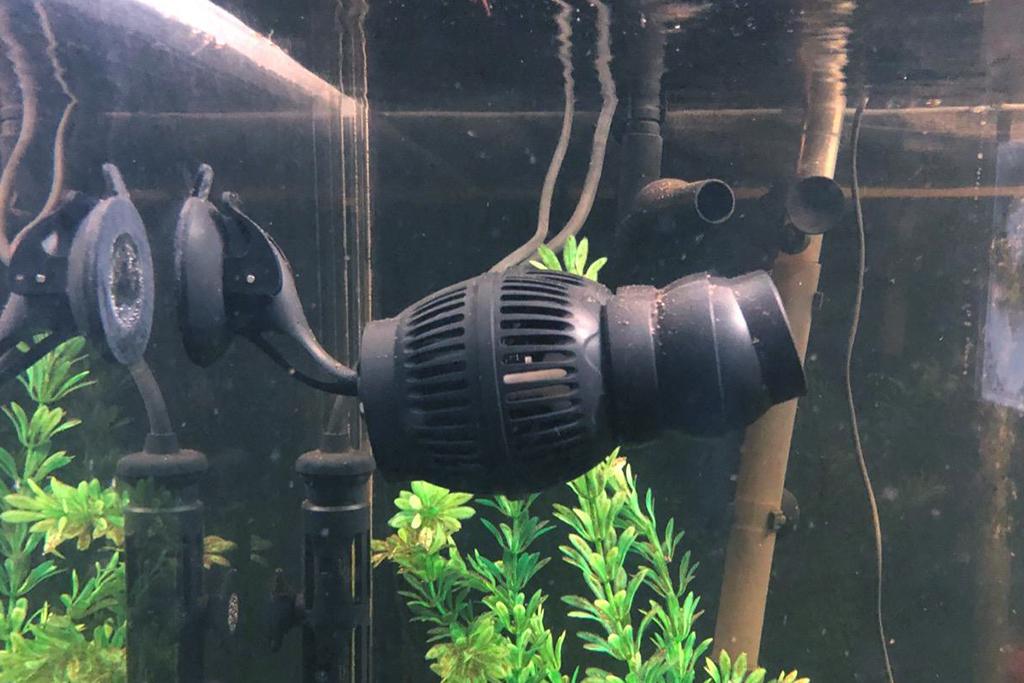
What is the right way to install a powerhead in the tank?
If you have a small aquarium, you may not need a powerhead, if you have an internal filter that can handle the flow of water. Similarly, if your aquarium is too large, you may want to use multiple powerheads. This way, your water won’t get stagnant or form dead spots.
Before you install a powerhead in the aquarium, you should know how to install it properly. Depending on your tank, you can either mount the powerhead on the front or back wall. If you plan to install live rock in your aquarium, place the powerhead on the other side. The correct way to install a powerhead in different fish tanks depends on the size of your aquarium, its length, and the type of plants it’s going to support.
For general installation, position the wave maker 6 inches below the water surface of the tank because it should be fully submerged. For different effects of the aquarium, there are 3 ways to install a wave maker: bottom installation to clean the residue of the fish tank, including uneaten food and fish excrement; if you want to exercise and shape your fish body, it is recommended to install on the middle of an aquarium; to replace the water pump and add oxygen level, upper installation can circulate the whole water. Then directly connect it to the mains.
Larger fish tanks will need a more powerful powerhead than smaller ones and vice versa. You should also consider the type of aquarium you have, as reef and planted tanks require different water circulation. Such as 16W 2000 GPH is suitable for tanks up to 130 gallons.
Once you’ve determined the size of your aquarium and selected a powerhead, you’ll need to experiment with its water flow. This way, you can check whether or not the flow is right for your fish exercise or live rock stay.
After installing it, in addition to cleaning the powerhead regularly, you should also remove the unit when it’s not in use. Make sure to unplug the head, lift it out of the tank, and clean it separately. If you have any calcareous deposits on the powerhead, you’ll need to wash it with a solution. If it gets clogged up, it will overheat, reducing its lifespan and increasing its electrical consumption. Overheating units can also add unwanted heat to your aquarium.
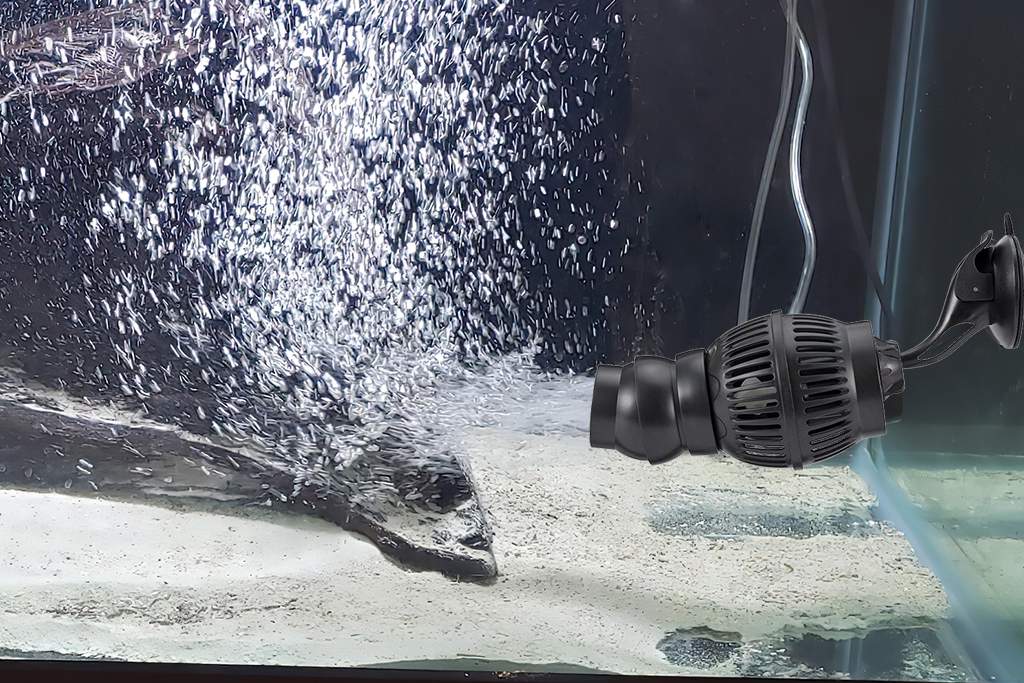
How to install a powerhead in a 100-gallon fish tank
If your tank is 100 gallons, before you begin installing a powerhead in it, you must consider the contents in your tank and the amount of water in it. Choosing the right power head for your tank is essential to avoid damage to your fish. Be sure to choose one with the correct power and capacity. Too-powerful equipment will not only make a mess in your tank, but it will also be ineffective in distributing the essential elements to your fish.
Powerheads should be designed to move water through the tank many times every hour. This is referred to as the GPH rate. A normal 100-gallon tank can benefit from a powerhead with a flow rate of 686 GPH and power consumption of 4 watts. If you wanted to run 4 times the rate then you would need a 1520GPH pump. But considering head loss, 1800-2000GPH powerhead is enough for a 100-gallon tank.
Before installing the powerhead, you should make sure it is in good condition. If your powerhead is already assembled, you can easily attach it using suction cups. First, clean the glass where you will place the suction cup, then find a good spot and attach the locking mechanism, plug in power and you are good to go. The attention that powerhead should be fully submerged. Otherwise, the working pump comes out to the water surface and makes a noise.
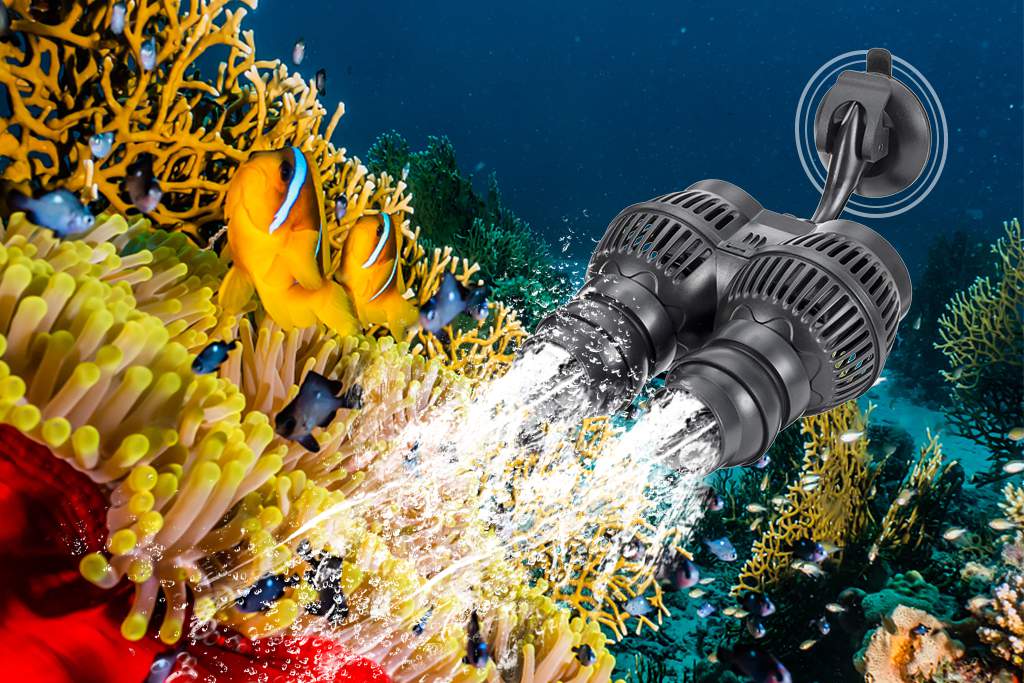
Things you need to know about choosing Powerhead
There are several things that you need to look for when choosing a powerhead. You should look for corrosion-resistant models. Look for ceramic and stainless steel bodies. If you can’t find any, consider buying a cheaper, inferior powerhead. Ensure that the brand you choose offers good support. It’s always best to buy a well-known brand as they are likely to have more support from the manufacturer and seller.
There are four basic sizes for powerheads – small, medium, large, and extra-large. Each one has a different flow rate. If you have a large tank of more than 75 gallons, you will want a larger powerhead. Using a large powerhead in a small tank could disrupt the fish’s life. The size and style of the aquarium also matter. A planted aquarium, for example, will require a lower rate powerhead than a reef or freshwater tank.
Choose the type of flow that suits your tank’s size. The main benefit of a wide-angle powerhead is that it moves a lot of water without creating the harsh streams associated with high-velocity pumps. This type of powerhead is also more energy-efficient, which is another plus. You should also choose a powerhead that will allow you to customize the flow by modifying its settings.
When buying a powerhead, remember that the larger the tank, the higher the flow rate. You may want to choose a high-quality unit with adjustable fluid rates. The variable currents that powerheads create will stimulate your fish’s natural behaviors. Many freshwater sharks enjoy swimming against strong currents. It also helps prevent boredom and obesity in your fish.
The best aquarium powerhead should be powerful enough to move 800L water per hour. It will cost about $0.86 per month if it uses 16 watts of power. However, it will cost a little more than that. If you don’t have a power head, you can use a double sponge internal filter to keep the water flowing efficiently in your aquarium.
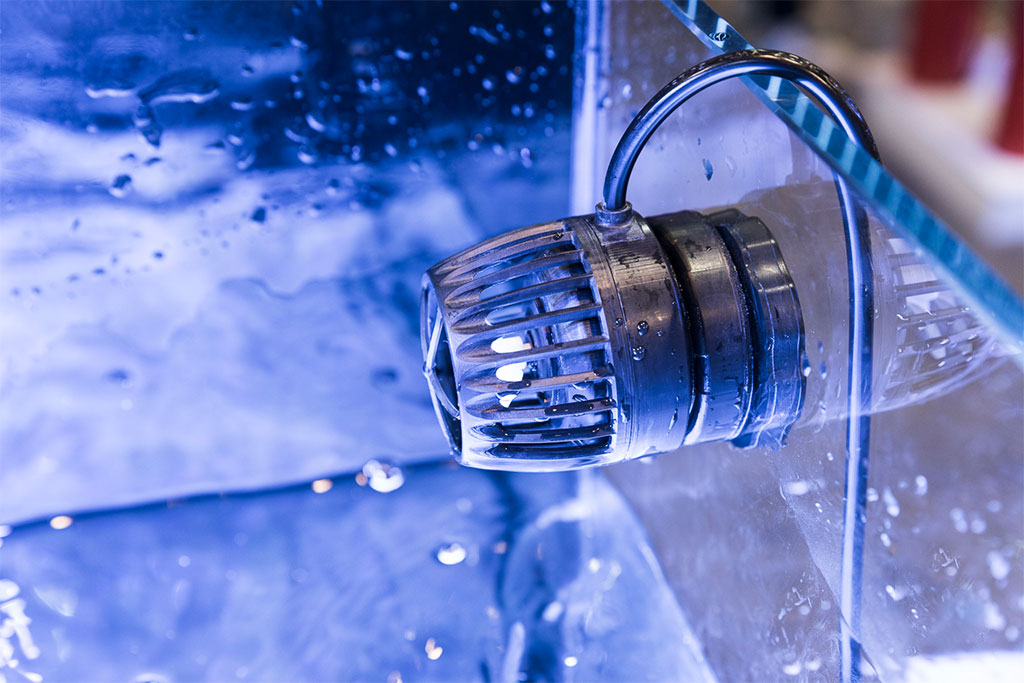
Powerhead works
The power head is made of plastic polymers, and many pumps can have defective seams that can fry the power head or kill the fish. Some pumps allow you to adjust the flow rate, and you can direct the flow in different directions. Flow rates that are too high can kill your newly established plants.
A powerhead is one of the most essential pieces of equipment for a new aquarium. Make sure to follow the manufacturer’s directions on how to install a powerhead correctly.
A powerhead works by forcing the water in your tank to circulate. The moving water stimulates the fish, and the fish can show their natural behavior by swimming against the current. The waves help distribute food throughout the tank, and they also prevent dead zones from accumulating. It is also an excellent way to reduce maintenance costs, as the water flowing through the tank is stabilized.
It is important to choose the right powerhead according to the size of your aquarium. Powerheads with a higher capacity are better for large aquariums, while smaller tanks require lower-powered models. Before purchasing, it is important to read the instructions and product description carefully to ensure that your new powerhead is compatible with your fish tank. Similarly, a low-power powerhead will not distribute essential elements in the water.
The positioning of the powerhead in the aquarium also depends on your filter. It is important to make sure the powerhead is not directly over the filter. This is because the filter’s water flow will affect its placement of it. When installing a powerhead, keep in mind that placement is a key factor for the health of your fish. Regardless of your choice, you will be glad you did.
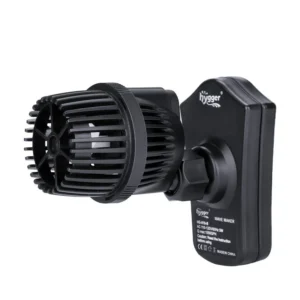
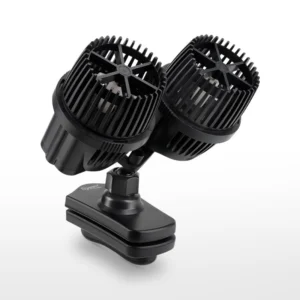
I am looking for a power head that has a extention …like a power head(surge ) at the outlet as well I seen one and now can track it down my power head keeps loosing it’s full potential once all the bacteria and fish waste accumulates under the gravel ..so looking for it to be more consistent …without constantly cleaning so you say I alright said this I did not receive anything can you help or should I ask a different supplier
Hi Larry h,
To prevent bacteria and fish waste accumulates under the gravel,
you can install the power head at the middle of the tank wall, and adjust the head to blow downward.
If you have a small to medium tank, you can get hygger 021 wave maker;
If you have a big tank, hygger 042 wavemaker pump is recommended.
Thanks
hygger team
Hi, I have a 130 gal tank I need to put my small mouth bass and bluegill in. I have no idea what they can handle or what they need but I can’t find any specific info on what size filter or what size anything. Can u gimme some advice
Hi Chris,
Both smallmouth bass and bluegill are freshwater fish that are sensitive to water pollution. Because they can live in 1-38℃ water temperature, a filter is necessary for them.
You can install two Hygger 908 Fish Tank Water Filters on both sides of your tank, the filter integrated bio-filtration, oxygenation, and physical filtration to help fish live a happy & healthy life.
By the way, you can install the filter behind the plant/wood/rocks to enjoy a happy tank viewing if you have a planted tank.
Have a happy aquarium
hygger